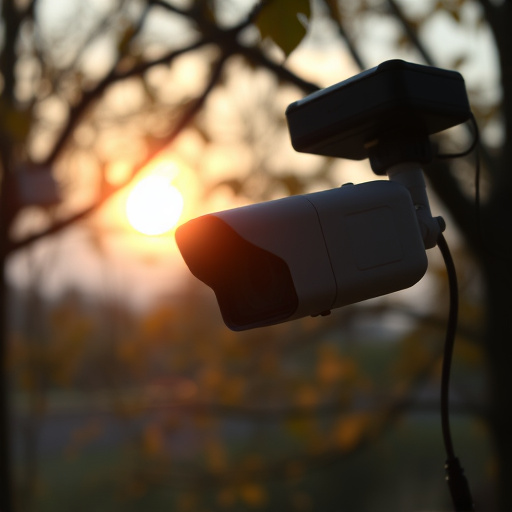Wireless hidden cameras in apartments pose a privacy concern, disguised as everyday items and transmitting signals via RF waves. To combat this, tenants should inspect areas, use RF detectors, employ EMF scanning tools, and stay informed about legal protections against unauthorized surveillance. Regular inspections, specialized equipment, and physical security measures are key to preventing covert camera placement, ensuring the safety of personal spaces in apartments.
Uncover the insidious world of wireless hidden cameras in apartments with our comprehensive guide. We explore the intricate details of these devices, empowering tenants to protect their privacy. From understanding the technology behind them to mastering detection techniques, this article equips you with knowledge. Learn about common placement strategies and legal considerations when confronting these invasive tools. Additionally, discover preventive measures to fortify your space against hidden threats, ensuring peace of mind in your apartment home.
- Understanding Wireless Hidden Cameras in Apartments
- Tools and Techniques for Detection
- Common Placement and How to Spot Them
- Legal Implications of Detecting Hidden Cameras
- Preventing and Securing Against Hidden Cameras
Understanding Wireless Hidden Cameras in Apartments
Wireless hidden cameras in apartments have become a growing concern due to their accessibility and ease of setup. These devices, often disguised as everyday objects like smoke detectors or light switches, transmit video signals via radio frequency (RF) waves. Understanding how they work is the first step towards detection. RF signals can be detected using specialized equipment that identifies unusual electromagnetic emissions.
Apartment dwellers can take proactive measures to counter potential privacy breaches by being vigilant and utilizing available tools. Regularly inspecting common areas for suspicious devices, installing signal jammers in private spaces, and employing RF detectors are effective ways to identify and mitigate the use of wireless hidden cameras. Staying informed about these technologies empowers tenants to protect their personal spaces and maintain a sense of security within their residences.
Tools and Techniques for Detection
Detecting hidden wireless cameras in apartments has become a critical skill in today’s digital era, where privacy breaches can occur unnoticed. The primary tools and techniques employed in this process involve radio frequency (RF) detection and electromagnetic field (EMF) scanning. RF detection devices, such as signal analyzers or spectrum scanners, are used to identify wireless signals emanating from hidden cameras. These signals often operate on specific frequencies that can be pinpointed and analyzed for suspicious activity.
Additionally, EMF scanners can detect the presence of electronic devices by measuring electromagnetic fields they generate. Hidden cameras, especially those designed for covert surveillance, emit unique EMF signatures that experienced professionals can recognize. By combining these tools with a thorough understanding of common camera frequency bands and industry knowledge about hidden camera types, individuals can effectively navigate and mitigate privacy threats associated with wireless hidden cameras in apartments.
Common Placement and How to Spot Them
Hidden cameras, often placed surreptitiously in apartments, can be a significant concern for privacy-conscious residents. They’re commonly stashed in seemingly innocuous locations like smoke detectors, light switches, or even fake fire alarms. Spotting these wireless hidden cameras requires a keen eye and an understanding of common placement tactics.
One of the best ways to identify them is by examining any unusual devices or modifications to existing fixtures. Look for discrepancies in wiring, subtle LED lights that blink on and off, or tiny lenses visible through gaps in walls or ceilings. Using specialized RF detectors designed to pick up radio frequency signals can also help, as many hidden cameras operate wirelessly. By being proactive and aware of potential hiding spots, tenants can take steps towards securing their personal spaces from this modern-day invasion of privacy.
Legal Implications of Detecting Hidden Cameras
Detecting hidden cameras, especially those operating via radio frequency (RF), raises important legal considerations. While individuals have a reasonable expectation of privacy in their homes and personal spaces, the use of wireless hidden cameras for apartments or any enclosed areas without explicit consent can be a breach of that privacy. Laws surrounding surveillance vary by region, but many jurisdictions have strict regulations against unauthorized monitoring.
If caught using such devices, owners could face charges ranging from invasion of privacy to criminal trespass. It’s crucial to remember that even if a hidden camera is detected, the legal implications depend on where it’s located and whether its use violates any local or national laws. Understanding these legal boundaries is essential when considering measures to protect personal spaces from wireless hidden cameras for apartments or other enclosed premises.
Preventing and Securing Against Hidden Cameras
Preventing hidden cameras, especially in apartments, involves a multi-layered approach that combines technology and vigilance. The first line of defense is awareness; tenants should be educated about potential signs of wireless hidden cameras for apartments, such as unanticipated device lights or unusual signals on their electronics. Regularly inspecting common areas and personal spaces with tools designed to detect radio frequency emissions can also help identify covert surveillance devices.
Securing against these hidden threats requires the use of RF-blocking materials and equipment in strategic locations. Installing RF shields around sensitive areas like bedrooms, bathrooms, and living rooms can disrupt the signal strength of wireless hidden cameras for apartments, making them less effective. Additionally, utilizing physical security measures like secure door locks and window covers further complicates potential intruders’ efforts to set up hidden surveillance equipment.
Detecting hidden cameras in apartments using radio frequency (RF) techniques is a crucial step towards safeguarding personal privacy. By understanding wireless hidden cameras, employing specialized detection tools, and being aware of common placement strategies, residents can protect their homes from invasive surveillance. Legal implications should also be considered when investigating these devices to ensure actions are within rights. Preventive measures, such as securing electrical outlets and using RF shields, further fortify against hidden cameras, fostering a safer living environment in the digital age.
